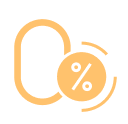
Our team applies its wide ranging in experience to determining.

Why Trade with Us
Swap free trading
Zero spread trading
Leverage upto 1:1000
Demo account
Trade in Top
| Symbol | Name | Price | Change | Change % | Volume |
|---|---|---|---|---|---|
| No data available | |||||
Learn About Bonds Trading FAQs
Commodities are the sale and purchase of raw materials such as crude oil, gold and agricultural commodities through arbitrage at fluctuating prices
Commodities can be traded on the physical market or through future options where traders make certain predictions about likely price changes
There are two broad categories: hard materials, derived directly from natural sources, and soft materials, including agricultural products
Prices depend mainly on supply and demand, geopolitics and economic development.
Marketing is a high-risk business due to high volatility, natural disasters and political instability.
Futures Traders: They buy and sell contracts promising delivery of a commodity at a fixed price on a future date based on the speculation of future price movements or to hedge against a change in prices.
Spot Traders: It manages the actual market price of commodities by buying or selling the actual goods rather than waiting until later. Hedgers: Use commodities as a way of hedging against possible price volatilities. Many of such businesses, for instance airlines hedging against increased fuel price-or investors may need a haven in future inflation outcome.Speculators Aim to reap from price moves of commodities without an intention to deliver the underlying physical commodity. These only care about following through with market trends.
Spot Traders: It manages the actual market price of commodities by buying or selling the actual goods rather than waiting until later. Hedgers: Use commodities as a way of hedging against possible price volatilities. Many of such businesses, for instance airlines hedging against increased fuel price-or investors may need a haven in future inflation outcome.Speculators Aim to reap from price moves of commodities without an intention to deliver the underlying physical commodity. These only care about following through with market trends.
- Decide on Your Investment Amount
Understand Your Commodity, It may be crude oil, gold, wheat etc, you ought to understand the commodity supply and demand factors driving the one you have to trade.
Choose an initial investment amount that fits comfortably within your financial capacity, without causing strain. Many traders start with smaller amounts to build confidence.
Effective investment management in commodities involves evaluating your capital, setting appropriate position sizes based on stop-loss limits, carefully using leverage, and maintaining a balanced risk-reward approach to protect your funds and enhance potential returns. - Set Your Risk Tolerance
Determine the portion of your capital you're prepared to risk on each trade. A common guideline is to risk no more than 1-2% of your total account per trade. For instance, with a $10,000 account, aim to limit risk to $100-$200 per trade to manage potential losses effectively.
Calculate Position Size
To determine the correct position size based on your risk tolerance, use this formula:
Position Size = Amount Risked ÷ (Stop-Loss × Unit Value)
If you're risking $100 with a 50-point stop-loss and a point value of $10, your position size would be 0.2 lots. - Learn Strategies and Market Analysis
Successful commodities trading relies on strong analytical skills and sound strategy. Study technical and fundamental analysis to identify entry and exit points in the market. Explore popular strategies such as trend following, range trading, or seasonal patterns, but choose those that match your risk tolerance and market understanding. - Test with Demo Accounts
Before committing actual funds, practice with a demo account. Most brokers offer demo accounts that mirror live market conditions, allowing you to test your strategies and become comfortable with the trading platform. Treat this practice seriously—it's a valuable opportunity to learn and adjust under real-market scenarios without the risk of financial loss.
Comparison Table of All Account Types
| Premium | Zero Spread | Scalpers | |
|---|---|---|---|
| Spread Type | Variable | Variable | Variable |
| Contract Size | 1 lot = 100 000 units | 1 lot = 100 000 units | 1 lot = 100 000 units |
| Minimun Deposit | 100$ | 0$ | 20$ |
| Leverage | 1:1000 | 1:1000 | 1:1000 |
| Demo Account | - | - | ✔ |
| Max Trade/Lot Size | Unlimited | Unlimited | Unlimited |





